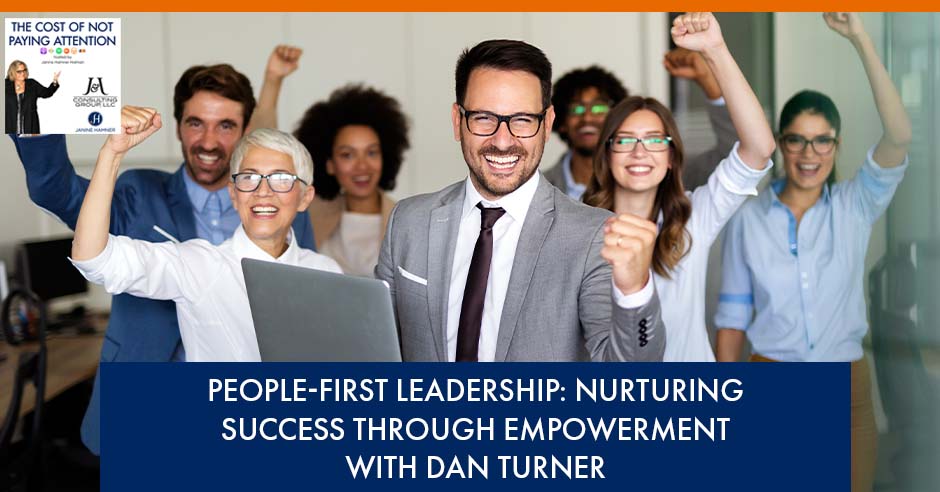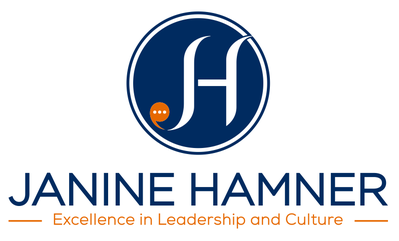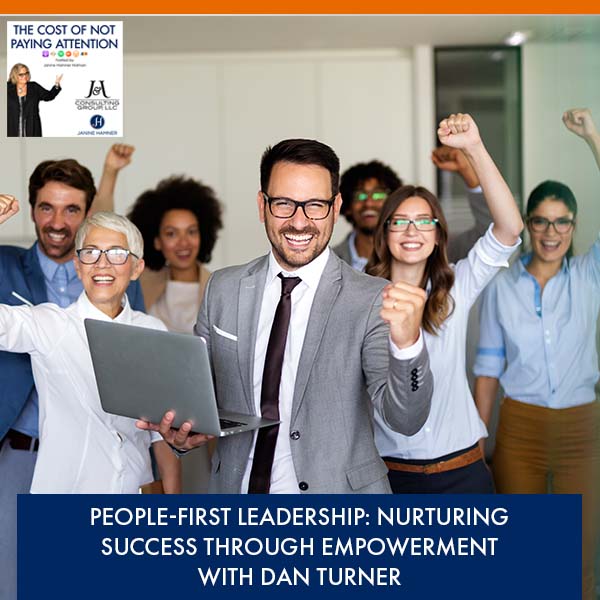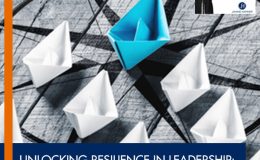
Building a community of trust and empowerment, Dan Turner, CEO of Xperigo, champions a people-first culture. Janine Hamner Holman sits down with Dan as he emphasizes the importance of listening to employees, particularly in understanding their needs and desires highlighted during the pandemic. By actively listening to employees and building strong relationships, Dan creates a work environment where employees feel valued and empowered to contribute to the company’s success. This episode offers actionable strategies for leaders looking to build resilient teams and foster a workplace culture centered on empathy and continuous growth.
GUEST: Dan Turner | LinkedIn | Xperigo
HOST: Janine Hamner Holman | [email protected] | LinkedIn, Facebook, and Twitter | Subscribe to my Newsletter! | Book me to Speak!
–
Listen to the episode here
People-First Leadership: Nurturing Success Through Empowerment With Dan Turner
Introduction
Welcome to the show. Dan Turner is the President and CEO of Xperigo. They manage customer experience on behalf of the automotive sector.
‐‐‐
The Cost Of Not Paying Attention
Dan, tell me, what is one thing that you have realized, either with your business or with your clients, what’s one thing that they have been failing to pay attention to, and what’s the problem that that inattention is causing?
First of all, thanks for having me here on your show. The one thing that I’ve noticed, especially since the beginning of the pandemic, is paying attention to what’s really important to employees in businesses. The pandemic really brought it forward that people were looking for more in the companies that they work for. They were looking for better work and life balance.
We should have learned our lesson throughout the entire pandemic. We’re trying to address this in ours, but I still see it in many workplaces across the country or beyond, where we’re not paying attention to the fact of what employees want out of their employer, what’s important to them, and how we can deliver that and still have a successful business.
This podcast has listeners in 54 different countries. Wherever you’re reading from, this is a reality that many organizations are struggling with: how do we continue to get the best from our people and give the best TO our people? The pandemic really accelerated something that was already happening in many organizations but that many organizations hadn’t come to terms with yet. The pandemic opened up Pandora’s box in terms of what employees need.
I was working with an organization and we were talking about the critical nature of an organization’s mission, vision, and values. Creating a mission, vision, and values is not enough. You might say “authority” is a really critical value for our organization. But what you mean is that you value being an authority or a subject matter expert. It is incredibly important to your organization, as well as how you do what you do and being respected in that way. Somebody else might look at that word “authority” and they might think, “Who are you? Do you want to be the Gestapo?”
It is getting clear about what we mean by the words that we say.
Understanding Employee Needs
Organizations are forever saying, “Integrity is one of our key values.” What does it look like to have integrity? What does it look like when we don’t have integrity? Few organizations are going to say, “We want all your cheats and liars. That’s who we want here.” That’s not what organizations say. What really matters, however, is how does “integrity” look and feel in the day-to-day experience of your people? Tell me a little bit about what you are doing at Xperigo in terms of working to understand what your employees need and then meet them where they are.
The most critical thing that I’ve learned is something that I’ve always embraced but I realized how important it was through the pandemic. It’s the number one thing that you need to do. A long time ago, I was in sales and a colleague gave me a piece of advice: we have 2 ears and 1 mouth and we should use them in that ratio. That’s something I’ve always tried to adopt throughout my career. It’s even more important when you’re a leader. Listen to what people are telling you. Give them the channels to tell you the things that they want you to know.

Paying Attention: When you’re a leader, it’s important to listen to your people. Give them the channels to tell you the things they want you to know.
One of the things that we do, and we’ve been doing it for years, is we focus a lot on culture. The various aspects of culture are super important to us. We do a survey every year. It’s an engagement survey that gives us a ton of information about anonymous feedback that we get from the team members at Xperigo that let us know what things they love about our organization, what things they’re not crazy about, and what new things we should be doing.
Many companies that I’ve worked at in the past or that I’ve heard about since will do the survey and it’s the last that that team member will hear about it. We make sure that what we do is we look at the data, put together a set of insights and some metrics with benchmarks, and go back to our team to say, “Here’s what we learned from that information that you shared with us in aggregate.
Here’s what we believe are the areas of opportunity. We’re going to go ahead and start building an action plan to close that gap or introduce this to the company. Here are the areas that you said were strong, so we’re going to double down in those areas and make sure that we don’t let that slip away.” That’s the number one important factor. It’s to have a consistent channel in which you can solicit that feedback and then act on it. We give updates throughout the year on how that action plan is progressing so that people know this wasn’t lip service. We are moving forward and trying to make a difference.
The second thing that has been critical to our business, especially through the pandemic, is when every CEO is trying to make the decision, “Do we go back to the office or do we not? What does that look like?” I created something called Coffee Chats with Dan. Coffee Chats with Dan is a very casual-sounding meeting because that was the intent. The intent was that there was no hidden agenda here. It’s Dan getting to know what’s going on in your world, your life, and your job. Is there anything that I can learn from that to make things better for the company and for that team member? As I was struggling with the decision on whether we return to the office or not, I did a bunch of these.
What I learned was what helped me make the final decision. In the four years of the pandemic, we had so many people whose lives had changed in ways that we couldn’t have expected. I’ll give you an example. With one young gentleman, I talked to him and asked him how life was going. He said, “It’s different. I don’t live near the office anymore. With the pandemic, I lost my childcare. I had to move two hours away from the office to be near my parents so that I could have childcare.” Somebody else told me, “I moved and I had to sell the car.”
Every story, although different, had a common theme. The theme was life has changed a lot. That made the decision very easy for me. If I, in my bubble, make this decision, “We’re all going back to the office tomorrow,” there was way too much to unravel there. What it would’ve meant is I would’ve lost a lot of great talent and I would’ve looked like not the smartest leader in the world. To me, that’s the big thing when you’re really trying to get a gauge on what decisions you should make and how you want to push the company forward. You need to be listening and then you need to act on the information that you get.
I’m getting towards the end of my career. I have some very set thought patterns as most people do as they get older. I’m listening to 30-year-olds who are the future of this organization and the future of other organizations potentially. I listen to them because they have a very different opinion than I do. I find that’s the only way that you can make decisions and keep moving forward in a way that you retain your talent and a way that you build a culture of belonging. As a leader, my ability to maintain the integrity that you were talking about earlier is that, “Dan’s not in the dark making decisions that work well for him. He’s listening to us and trying to make the best decision for the organization as a whole.”
I love those two examples that you gave of Coffee with Dan and doing an organization-wide survey once a year. Part of what I love about them is that they’re very different kinds of data that you’re gathering. If I come and I have coffee with you, you’re going to know exactly who I am. You’re going to know what my position in the organization is and I’m going to get an opportunity to really connect with you one-on-one.
In many organizations, the opportunity to connect one-on-one with the president and CEO is almost unheard of. I love that you’re doing that, and I’m curious about it. How have you set it up? Is it office hours, or do you set it up where people schedule that time with you so that it’s a private one-on-one?
It’s office hours. We set them up in advance. We make sure that people have the ability to attend them. It’s a big focus for me. I agree with you. There are far too many companies that don’t have those one-on-one conversations or where their employees don’t know the CEO at all, and the CEO doesn’t know them. I’ve tried to take it to a whole new level because that interpersonal interaction that you can have is so valuable.
In my organization, first and foremost, every new team member who joins the company has a meet-and-greet with me in the first week of their employment. I sit down with them for an hour and introduce myself. I give them a little background on my career so they understand where I’m coming from. I talk to them about personal things and about my personal life, like the things that I like to do. I talk about my wife and kids and where we live.
I ask them to do the same for me so that I can understand what their world’s all about. It gives me a very unique opportunity to talk to them about the history of our organization because the history of the organization is a fantastic context for where we’re taking it in the future. I then give them my perspective on what culture means to this organization.
The interesting thing is when I have those meet-and-greets, I get feedback all the time like, “I didn’t even know who the CEO was at our last company. Here I am on day two, sometimes day one, of my new job, and I’m talking to the CEO for an hour.” That shows a whole ton of respect for the people who are coming to work at your organization. It buys me a lot of credibility, the fact that I’m able and wanting to do that. Even throughout the year, in addition to these Coffee Chats with Dan, we also do something called stay interviews. We’ve all heard of the exit interview, which to me always seemed a little strange because interviewing somebody on their way out the door doesn’t help that person.
You’re closing the barn door after the horse has already escaped.
Exactly. We do something called stay interviews where we look at all of what I call rock stars in the organization and find out, “Why are you still here? What can I do to continue to keep you here?” From that, we can gain some very high-level themes and start building plans around, “How do we keep the talent here happy with their employment here at Xperigo?”
We do quarterly town hall meetings where it is primarily me presenting some important information on the business. My executive team takes part in it as well. We’re very transparent with our communication in that we stress the confidentiality that is required in those meetings, but we share our pipeline with our team. We share our financial position, good or bad, and we talk about why it might not be good or why it’s good. We want everybody to feel that they are invested in this business as heavily as I am.
Throughout the pandemic, one of the things that I introduced, because I wasn’t talking to enough people anymore, is I started doing these little fifteen-minute videos that I put out every month to the team. It’s me sitting here at my home office, but I talk about the 5 or 6 things that are on my mind that I want them to know. It’s all of these points of communication where most of the people in the company have a good idea of who Dan is. I want it to be that way.
This speaks to our company too. We had an individual who had 28 years of tenure at Xperigo as a call center agent working in the call center. Imagine that, somebody working in the call center for that long. Whenever I do these videos or any of these communications, I always get emails from team members throughout the organization letting me know how much they appreciate the communications that I share with them and the information that I share. As this person retired, I got this wonderful note from this individual thanking me for all that I’ve done to make it easier for them. Those things mean a lot to me. It’s that kind of thing.
Whenever I go out and meet with the team, which I did because we had a couple of corporate events and their families were invited, when I go there and see our team members and their families and all these little kids running around having fun at the picnic that we had, it hits home for me that this is why I work so hard every day to do these things. These are humans like me fighting through life like I have with my family. It makes me hold the responsibility for what I need to do for them on a daily basis. It keeps me accountable.
I feel like I’ve got a good relationship with many people throughout the company. It’s very difficult to maintain that one-on-one when you’ve got 200 employees, but everybody gets the chance to talk to me at least once. That’s for sure. It’s something that has been a priority of mine, and it’s appreciated greatly by everybody in the company.
I am 100% sure it is greatly appreciated by your employees. I’m curious. I am sure that there are readers out there who are CEOs. I’m sure you’ve run into some of these CEOs in your career who say to you some version of, “That is so much time. How do you figure out what the ROI is on that investment? You’re making a huge investment in that,” or, “I could never do that because it’s way too much time. I have too many other things that are more important than that.” What do you say to those kinds of questions or concerns?
I’ve come up against that, for sure. I remember one individual in a meeting. It was a group of CEOs. He was expressing his outrage over this pandemic because he had a corporate-wide meeting and there were 26 people in that meeting that he had never met before. He was blaming the pandemic. I quickly spoke up and said, “It’s not the pandemic. It’s you. I’ve been through the pandemic like you and I don’t have that problem. Here’s the difference. You’ve made something else a priority, and I’ve chosen to make my people the priority.”
Everything that we do at Xperigo is a people-first approach. If you make people the priority, they are going to work harder for you. That’s the way that I like to look at this. If you make people the priority, you don’t need to performance manage those people because they want to do good for you. They don’t want to let you down because you’re doing all the right things for them. That’s something that a lot of CEOs need to consider. What is more important than interacting with your people, talking to your people, and listening to your people? If you can convince me that there are five things more important that you do every day than that, I’d love to hear them.
If you prioritize people, they are going to work harder for you. Share on XWith that 28-year customer service person, think about the customer service that they were able to provide to your customers because they’ve been there for 28 years. That kind of longevity is becoming more of a unicorn in our world. The big thing that most CEOs are struggling with is, “How do we keep the right people? How do we retain our top talent?”
What you are speaking to is you invest your time in having them feel known and seen, having them have an experience of belonging, and having them really feel connected to you personally. It’s not that they don’t want to let their manager down, they don’t want to let Xperigo go down, or they don’t want to fail. They don’t want to let Dan down. That is a big shift that you have created in this organization.
I feel it every day. I belong to the CEO networking groups. A couple of them were created during the pandemic to discuss problems so that we could all feel like we’re in this together. When everybody else was talking about the challenges that the Great Resignation was creating for those companies, I had no idea what they were talking about because we had not experienced that.
We have a couple of roles within our company that are in high demand, especially during the last couple of years of the pandemic. Some of them even showed me they’re getting offers ten times a day from much bigger companies than mine. They’re being offered money that I can’t even begin to think about paying them. I asked one of them, “With all those offers and all that money, why are you still here?” The answer that I got back was, “It’s because you guys treat me well and I like it here.”
There’s always going to be that person who will chase the money. We’ve all made that mistake at one point in our career. You learn the hard way that that’s probably not a good idea. For many individuals here at Xperigo, that’s what it was. It was, “I have a great work-life balance. You guys care about us. You listen. You keep putting more benefits for us into the organization. For that reason, I’m going to continue to work here.” It eliminates a lot of problems. You retain top talent, which we all know is difficult and expensive if you don’t.
On top of that, we’ve got people who perform because that’s what the culture of the company is all about. We’re here together. We’re going to win together. I always use sports analogies with my team, and they all know because I’ve said it many times. I like to win in anything I do. I’m highly competitive, and it creates a team that’s competitive. We all want to win. We all want to celebrate those wins together. What seem to be little things, and unfortunately, I see so many companies not investing their time in some of these things, can pay off in a really big way.

Paying Attention: What seemed to be little things can pay off in a big way.
I’m curious. On a personal level, where does this come from in you, this focus on your people and on organizational culture?
Some of it came from my upbringing, for sure. I have always been a people person. I was involved in sports at a very young age. Prior to getting involved in sports, I was a little more timid and not as outgoing as I am. I got involved in sports and realized sports were all about people and all about leadership. That set the stage for me.
I realized that if you focus on people within a team and establish those relationships, great things can happen. You hear about it all the time with sports teams. It’s never that the team had the best players. It was that the team had the best chemistry. When I see that in my life when I was on sports teams, I think about the same thing in business. I think, “How do we create the chemistry so that this becomes a team that nobody can touch? We don’t need to have all the greatest people on this team, but we do need to have a team that works better and harder than everybody else.” That’s how I’ve approached leadership from very early on.
The other thing I’ve learned more in the last couple of years is that what really is at the foundation of a rich culture is empowerment. People don’t want to be micromanaged. They don’t want to be told what to do every day, especially smart people. So I make sure that we understand what our people need. I tell my team, “My job as a leader is to provide you ground cover. I’m the jet that swoops in and clears the road so that you’ve got an easy victory.” When I do those kinds of things, that’s what I believe my job to be.
The foundation of a rich culture is empowerment. Share on XWe talk about it all the time in our organization. People-focused leadership. We have to manage the operations, and there are many functional things that we have to do every day, for sure, but every decision we make and every plan that we put together, it’s always about considering the impact on the people as we move forward. If it creates any negative impact, how do we eliminate that? How do we mitigate that? Sometimes, you can’t get rid of it entirely, but we try to make sure that we stay on this people-focused approach. That has been the difference for us in the last few years, for sure.
Relationship With Failure
I love it. With innovation and how fast things are moving, one of the things that often comes up in that conversation is the word “failure.” Most humans have an adversarial relationship with the word failure. For many of us, it turns us back into a five-year-old. We want to cry. We want to throw a temper tantrum. We want to stomp our little feet. We want to throw something.
We have very old patterns of coping with the concept of failure because, in most of our brains, failure equals bad. It equals, “I did something wrong. I am being naughty. We are being naughty. We’re wasting the organization’s money.” We have ALL KINDS of stories rattling around in our brains about what it means to fail.
I’m curious; inside Xperigo, what are you doing, if anything, about your relationship with failure?
First, it starts with me. I wouldn’t be where I am if I didn’t have failure. Some of the biggest “failures” that I had were the biggest reasons why I was able to continue to progress in my career. My story is coming from a tow truck driver originally at the beginning of my career to becoming a CEO, which is a goal that I set for myself.
I want to take a pause right there because you ran over that a little bit. You started as a tow truck driver and you created a plan or a goal for yourself that you wanted to become the CEO. That’s pretty hot!
It leads right into your conversation about failure. I don’t believe that you can get far ahead in life unless you set what is called a BHAG, a Big, Hairy, Audacious Goal. I’ve mentored a few young people; I tell them, “You’ve got to set a Big, Hairy, Audacious Goal first. The scarier, the better.” It took me 30-plus years to achieve that goal. When you have that big goal, somehow, your subconscious keeps directing you where you need to go. Why “failure?” To me, I don’t like that word.
I don’t believe that our setbacks and challenges are failures. I believe they’re necessary steps to success.
I know that in my career, I’ve taken what I would call “bold moves” on several occasions to try to create a better situation for the company I was working towards at the time. Hopefully, that would lead to more career progression for me. I took some big, bold moves. A couple of them didn’t pay off. I didn’t regret them because they taught me things that I needed to know. There were several big, bold moves that I took that were game-changers for me and propelled my career to the next level.
I want everybody to do that. I want you to take the bold move. You’re going to fall down every once in a while when you take that bold move, but if you’re not out there taking chances, then you’re trying to live your life comfortably. Comfortable is complacent.
Complacency is failure in my mind.
That’s the way that I approach it. I share that with my team. It’s not easy for everybody to always grasp that because, throughout your career (and life!), you’re told that you shouldn’t fail. When you’re being bold, failure is a learning opportunity that’s going to allow you to be successful the next time.

Paying Attention: When you’re being bold, failure is just a learning opportunity that paves the way for future success.
I love what you said. Failure is a learning opportunity. We, as individuals and as organizational team members, can get that – and get it in our bones – that we’re going to need to learn something. When we set Big, Hairy, Audacious Goals as individuals or as an organization, we’re not going to get it right straight out of the gate. We’re going to think that something is true and we’re going to figure out, “That wasn’t right.” I can’t remember the exact quote, but Thomas Edison famously said something to the effect of, “I didn’t fail. I learned 2,000 ways to not make a light bulb before I learned the one way to make a light bulb.” We can think about it as an opportunity to learn.
Part of what I love getting to work with organizations on is working through how can we bring that learning to everybody else in the organization?
At a town hall meeting or at another venue, how can the CEO or I stand up and say, “We were trying this thing. We thought we could go about it this way, and it didn’t work. Now, what we’re doing is this other thing. If you have any thoughts about it, please send them our way.”
When we can push out in the organization those opportunities for learning and those opportunities to get more heads in the room, some people will have wackadoodle ideas, and some people may have brilliant ideas. You may have a wackadoodle idea, but then there’s a kernel in the bottom of it, and it can spur others to see things from a different perspective: “I never would’ve seen it this way.”
I have a young man who’s working on my team who is neurodiverse. I hired him specifically because he’s neurodiverse and he’s going to see things in a different way than I am. I love his perspective… and I love what you’re talking about. What you’re talking about is reframing failure so that we think of it as an opportunity to learn and we think of ourselves as a learning organization.
I don’t think you can be afraid to talk about failure. This is one of the things that I talk about with other CEOs and in interviews that I’ve had, which is that a part of leadership is vulnerability. What people want to see about you as a leader is that you fail too. I’ll gladly tell people about some of the failures that I’ve had. I didn’t go to university or college. It didn’t work out at the time when I was 17 or 18, making that choice.
Vulnerability is a key part of leadership. Share on XThere was a period of time when I thought I had to hide that because it was going to be detrimental to my career. Now I want people to know that. I may have made a bit of a mistake when I was younger and not have gone and pursued whatever I could have been doing at the collegiate level. To me, it’s about letting people know that you’re like them. You make mistakes. You learn from it. You move on. You have to let them know that it’s not just talk. You walk that walk as well.
The other thing that you talked about was getting those fresh perspectives when things aren’t going well and bringing in more people. That’s a strategy that we’ve employed many times here at Xperigo. First of all, a healthy culture is a diverse culture. We have people from all walks of life and then get them involved in the process.
When we were building out the values on which our company is based and which our culture is based, we had input from everybody in the company on what they wanted to see those be. Ultimately, the executive team and I had to mold those down to what they ended up being, but everybody felt like they had their fingerprint on those values. The minute that you do that, you get an extreme amount of buy-in.
For those big projects that we do, that’s something that we always try to do, which is to include more people. If you include more people, the chance for failure is less, first of all, because there are more perspectives and ideas. Many times, we’ll launch a big initiative knowing that we won’t get it right the first time. We’re already planning on, “What are we going to do when we realize that didn’t go well? What’s going to be the process to learn from that and move forward?” We’ve done that on several occasions as well. It’s something that should be embraced because nobody’s perfect!
There was a quote that I read, and I forgot who it was from. It was saying, “Perfection is a series of changes.” Everybody strives for perfection. Perfection isn’t something that exists. It’s every day looking at how you can adapt from the setbacks or change to be better. That’s bringing you on a path to perfection… that you’ll never achieve.
That’s right. I was recently talking with a CEO. She was telling me about how in June of every year, she pushes the same question out to everybody in the organization, “Who do we want to be when we grow up now?” The company has been around for twenty years! They’re constantly looking at, “What do we do that we want to shed? What are the things that we don’t do that we want to bring in? What are the patterns that we’ve created that we need to break?” They gather all of that information and then create a new plan between June and September. By September 15, they are ready to go on the new path for who they want to be when they grow up this year until they ask the question again. That kind of organizational renewal is highly unusual and super healthy.
We do that almost on a weekly basis. We have a monthly managers’ meeting where they present what they’re working on. What I usually do at the end of every manager’s meeting, which is a two-hour meeting, is listen to everybody, and at the end of that meeting, there are always closing remarks that I make. My job during that meeting is to really pay attention to what’s being presented to me by them and try to come up with, “What’s the theme of what I heard today?” I do this all in real-time. While I am in the meeting, I try to come up with what the theme was and whether I can do a quick internet search on some quotes from famous people that will apply to where they’re at.
We had a manager’s meeting, and every manager presented me with a task, an initiative, or a project that they were working on. Every one of them was about continuous improvement. It was about taking something that we’ve been doing successfully but finding a way to do it better. Those are what I would call bold moves. When you’re in a department and it’s running well, why the heck would you go and change things?
That’s right. It’s the old, “if it isn’t broken, why fix it?”
We do. Every department that presented to me, they all were presenting me things that were either brand-new or a completely different take on the way we were doing it before. At the end of the meeting, my closing remarks were, “Do you guys realize what you presented to me? You presented to me that this complacency is no good and continuous improvement and change is good.” That’s hard for a lot of companies and people to grasp. We’ve been beating that drum for so long here at Xperigo with our culture that it’s in our DNA. It excites me to see that.” That’s what I said to the team. I also said, “I’m so optimistic about the future for us.”
Interestingly enough, the pandemic was a good thing for us because it made us look much more deeply into the organization to figure out how to continue moving forward successfully, especially because we primarily work in a remote environment. It has its own challenges, but with what I saw in that meeting that day, I said to them, “I’ve never been more optimistic because you guys are continually trying to raise the bar.”
Some of the things that we’re doing were areas where in the past, we said, “We won’t go there. We don’t want to go there.” We’re adapting this to a completely new statement, “Bold moves are what pays off.” We’re treading into territory where we felt like we didn’t belong before, but we’re doing it because we know that there’s a big reward there if we can figure it out. I fully expect to fail on some of that. I expect there to be some big hiccups, but we’ll figure it out and we’ll move forward.
It excites me for the future because I know that it’s going to allow us to be successful. What I also love about it is that people are engaged because they’re not doing the same old thing every day. They’re not asked to be robots and go in and do the same thing every day. My perspective is, “Figure out a new way of doing this and show me how smart you are and how good this can get.” It’s a pretty exciting time here in the organization.
Transparency And Sharing
I know we’re starting to run long in the interview and I don’t want to leave you without asking you this. I work with a CEO; we’ve been working together for 6 years. One of his big challenges is in the domain of telling other people the plan and letting other people look behind the curtain. The whole idea of, “We share our financial positioning. We share our pipeline,” I’ve said those kinds of things to him, and I hit a brick wall.
He’s terrified of, “They could take that information and they could tell our competitors,” or, “They could thwart the plan somehow,” which is an idea that’s deeply embedded in our brains. Our brains think, “I can’t tell the plan because then somebody else might thwart it.” When you’re speaking to CEOs who bring up those kinds of concerns or the V word, Vulnerability, how do you unofficially help coach them to, “Here’s another way to think about it?”
What I would say to anybody who thinks that way is that with the risk of sharing that information with your team, the risk of not sharing it is much greater because you’ve got people who are not as engaged. They don’t know what their role is in the company in trying to achieve what the company is trying to achieve. That’s a question that we ask on our survey every year, “Do you feel like you know what you are trying to do in achieving our goals?” If people don’t, then that’s a problem for us, and we try to figure that out.
We sit down every year. We do a three-year strategic plan like most companies. We spend a lot of time. We reach out to various managers and leaders within the organization to contribute to that plan. When the plan is done, baked, and approved by the board of directors, I present this three-year strategic plan. Much like I present it to the board of directors, I present that plan to every team member at Xperigo through one of our town hall meetings.
For me, the power of letting people know, “Here’s where we’re going, guys. Here’s why. Here’s what I expect to happen. Here’s what your role’s going to be and what we expect out of each of the departments and why it’s important to us,” gets a level of buy-in and understanding. If you’re fearful that somebody’s going to thwart the plan, then I question, “How solid was your plan to begin with?” It’s true. The confidential information that I share, I wouldn’t want to go outside the walls of my organization.
At the top of every meeting where we’re presenting that type of information, I put a slide up on the screen, which is, “We’ve all signed an employment contract that we’ll keep the information confidential. This stuff is some of the most confidential information we will share with you. Please keep it confidential because it has the ability to cause big issues for us and not achieve our goals.” I don’t know of a breach of that confidentiality to this point. It may have occurred and there were no ramifications, but that’s the big thing for me.
The risk of not sharing that plan is far greater than somebody else getting ahold of it. It’s critical to being successful.
Part of what’s wonderful about it and part, I’m sure, of what your people then experience is, “Dan and Xperigo really trust me. I am trusted as a member of this team not only to execute the plan but also to know the plan, to know where we’re going, and to have an in-depth understanding of what we’re working to create.” That’s a key part of what then creates that buy-in, that excitement, and that drive for continuous improvement. And it’s deeply tied to an experience of belonging, which many organizations are talking about these days.
To work so hard to build those relationships and then completely crush the relationship by not trusting them with information about the business would be counterproductive. When I do this, it’s not Dan’s plan. It’s our plan. There are so many businesses that I worked at where the executive team rolled out their plan. What we;re creating is fundamentally different. It’s our plan. I shared it with you. The people on your team contributed to it, and it’s our plan.
Trust is such a big part of a healthy culture.
We had a conversation not too long ago. We’re big on trying to thwart cyber issues. We had a big quarterly meeting with my cybersecurity team. Email phishing is a concern. One of the things that we were talking about is, “For the call center, for example, who maybe doesn’t need access to email as much as other people in the organization, can we shut down that so that there are no issues from a cybersecurity standpoint?”
My perspective was, “We could, but what message are we sending to those team members? We’re sending the message that we don’t trust them. Yet, we trust everybody else. Can’t we continue down the path of education and adjusting behavior rather than saying, ‘We don’t trust you. You’re children. We’re going to put you in the playpen over there to keep you out of trouble.’”
At the same time, they’re your customer service representatives. They have more contact with your customers on a day-to-day basis than probably anybody else in the organization. They’re in touch with more customers more frequently than anybody else. Often, it’s because of their educational attainment, their hierarchy in the organization, and many other factors that they may be held at a lower level of trust or a lower level of esteem in the organization.
I love that you said, “No. Could we do that? We could do that, but what would be the impact on those team members? What would be the story that their brain is going to make up?” The story our brain makes up is never rainbows and unicorns. The story our brain makes up is always, “There’s a problem. I’m a problem. I’m in trouble,” because that’s how our brain is wired to try and keep us safe.
They’re going to assume, “The organization doesn’t trust me. They don’t trust me because I’m not worthy of trust.” It always comes back to, “What’s the problem with me?” We’re all the stars of our own television show. If we’re not the star and we’re playing the “best friend” in the story of our own life, there’s a problem! We’re all the center of our own universe, so it’s always going to come back to, “I’m a problem. I am untrustworthy.”
Nobody’s going to do their best work when they’re feeling like they’re a problem and they can’t be trusted. Mischief is going to happen in their brains. They’re going to think – unconsciously – “If they don’t trust me, then I’m going to prove them right.” They are going to tell information about the company that could be detrimental or other things.
Whether it’s a marriage, a family, or a work relationship, trust is what holds it all together. We take that very seriously. When some of the things that you talk about are true in some organizations where they look at those frontline teams and think differently of them, I remind people that because of that impact that they have with the customer with those 10, 20, or 30 touchpoints with customers every day, we’re all here to support them.
Trust holds any relationship together, whether it's a marriage, family, or work relationship. Share on XWhen it comes to the operational leaders, the HR team, and the executive team, we’re all here to support them to make sure that they get it right and deliver what we need to our clients’ customers. I’ll remind people of that regularly because that is, in our automotive industry, where the rubber hits the road. It’s where we are able to make a difference and keep our clients and their customers happy.
Closing
This has been a delight, and I so appreciate your sharing your stories from the trenches with the culture that you are creating at Xperigo and with the trust that you’re putting in your team. Many organizations say, “People are our most important asset. We’re a people-first organization.” You guys really are. You put your money where your mouth is. You are creating what’s known as psychological safety in the workplace, where people can ask questions and raise concerns without fear of reprisals.
You make the investment in time, which is one of our biggest finite resources. You make a huge investment in your time to have your people feel really connected not only to you but to the work of the organization and what it is that you are about creating. Thank you so much for your wisdom, your insights, your transparency, and who you are.
I’m happy to have done it. Thanks very much for having me.
This has been the Cost of Not Paying Attention. Remember, great leaders make great teams. Until next time.






